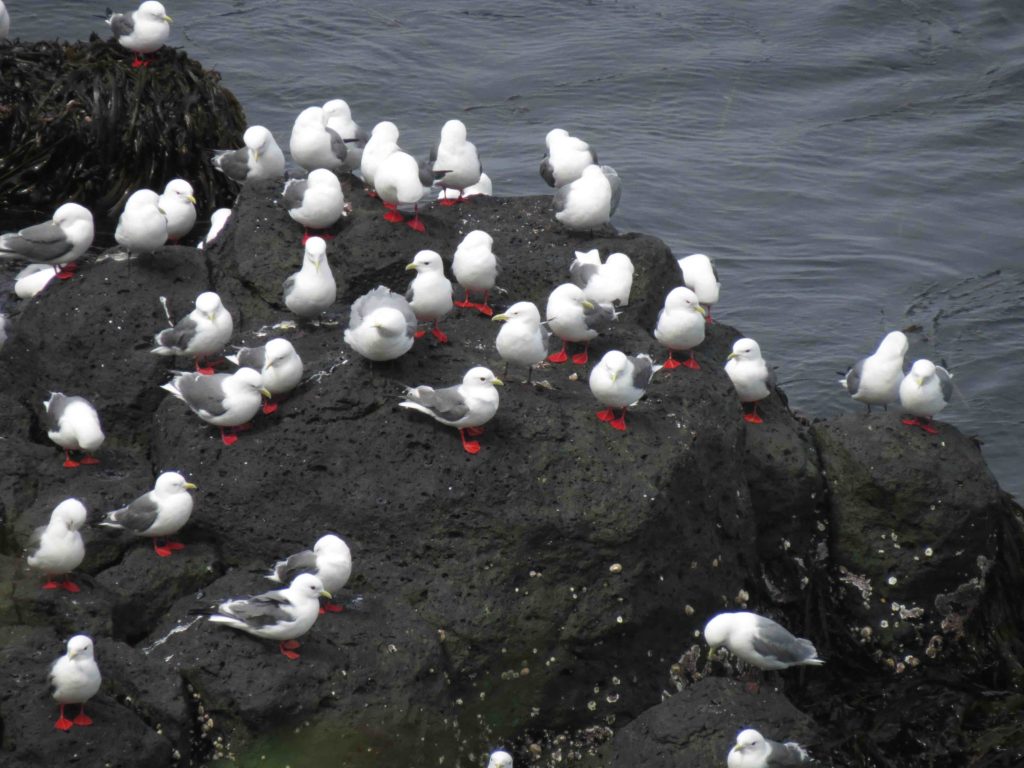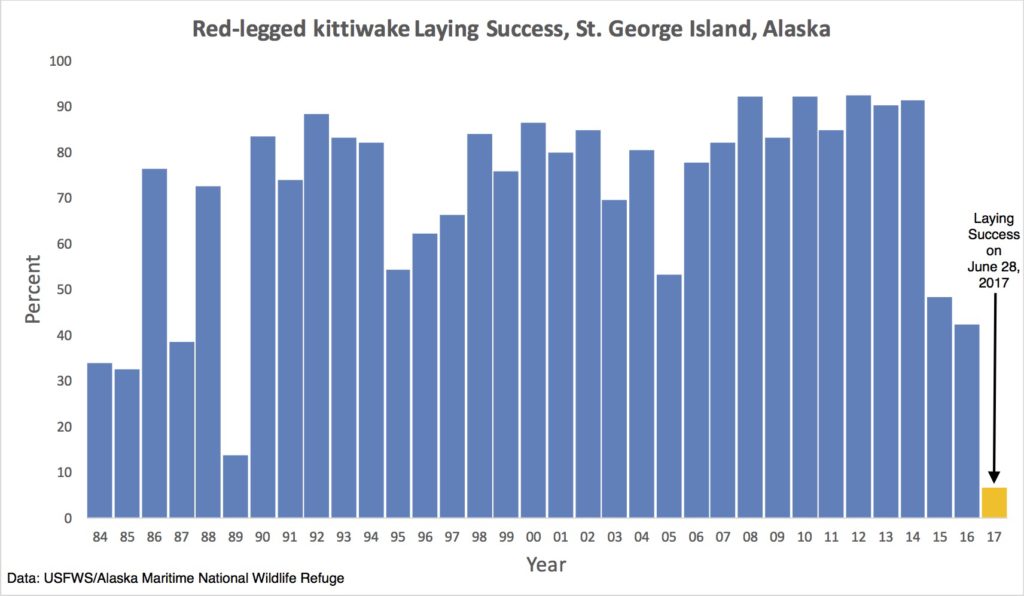Rachael and Abram are on St. George Island studying red-legged kittiwakes. Even though field biologists can be totally organized with all the details for camp-life, they can’t control whether their study species will lay eggs…
Here’s Rachael’s most recent report from the field:
We arrived on St. George in late May thinking that we had about two weeks until the red-legged kittiwakes started to lay eggs. We anxiously waited and watched for birds building nests. There was some activity, but generally it seemed like there was only one bird on each nesting ledge.
Nest building takes two birds. One bird to gather material, and one bird to ‘pat-pat-pat’ it in place. They tend to take turns. They also need to guard their freshly gathered pile of mud and moss, since if it is left unattended other birds will come in and steal the material. A nest platform that can take as little as a couple of hours to build can be dismantled much quicker than that!

We saw our first egg on June 7. It was laid by a bird that we tracked overwinter and who laid the first egg that we saw last year! A few days later the nest was disserted and the egg was gone. That was when we really started to get worried. Since then eggs have been few and far between. On all of the cliffs that we work on, where we could have about 600 nests, we saw 10 eggs and now only one nest is still active. For that pair, the last incubation trip took at least 4 days, which is on the long side.
A failure year is a common thing for long-lived seabirds, basically since there is ‘always next year’ to reproduce. However, the monitoring data collected by the Alaska Maritime Wildlife Refuge shows that in the last 33 years red-legged kittiwakes typically have greater than 50% laying success. This year we are somewhere less than 10% (see figure below).
The summer isn’t over yet and there is still a faint glimmer of hope that somehow conditions will change and eggs will be laid. But all signs are against it. Red-legged kittiwakes now loaf on the rocks below the cliffs and are leaving behind clouds of body feathers and their first primary feather. Feather growth requires a substantial amount of energy, enough so that many species of birds don’t grow new feathers and breed at the same time (though some do like least auklets!).
The few diet samples that we have gotten suggest that the kittiwakes are not finding their preferred prey, myctophids (lantern fish), within their normal foraging range. We have been resighting our banded birds and they tend to hang out on the cliffs for 2-3 days and then disappear for a week or two. And of course, the eggs that have been laid have mostly been lost. So, it seems that this year will be another poor year for red-legged kittiwakes. Hopefully next year will be better, but in the future, it will be interesting to see how these poor years will influence population numbers.


